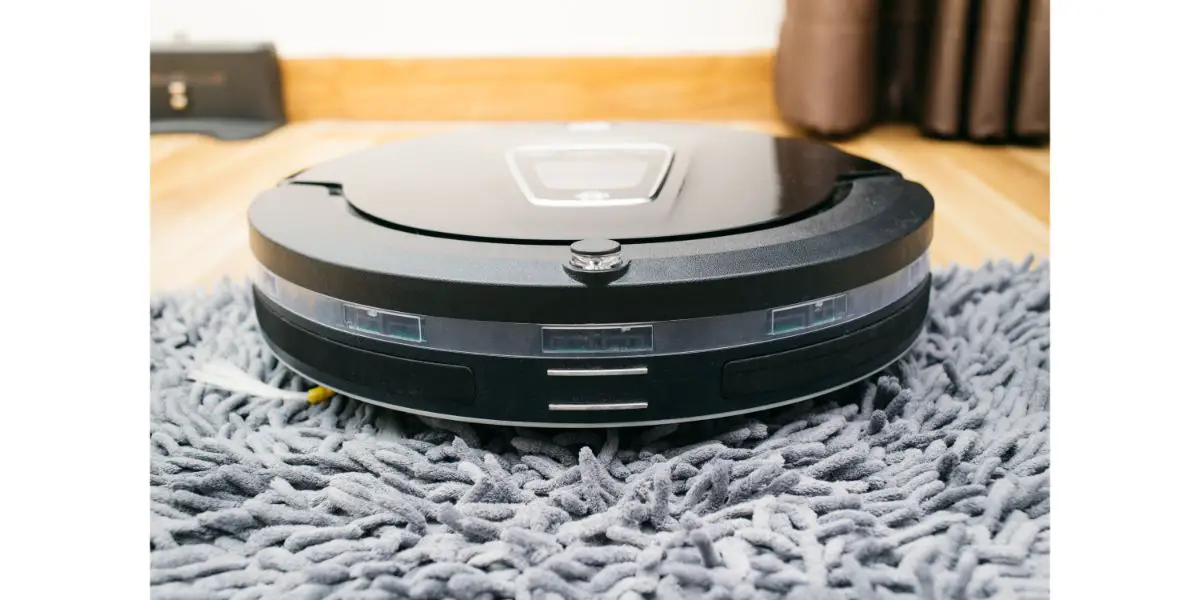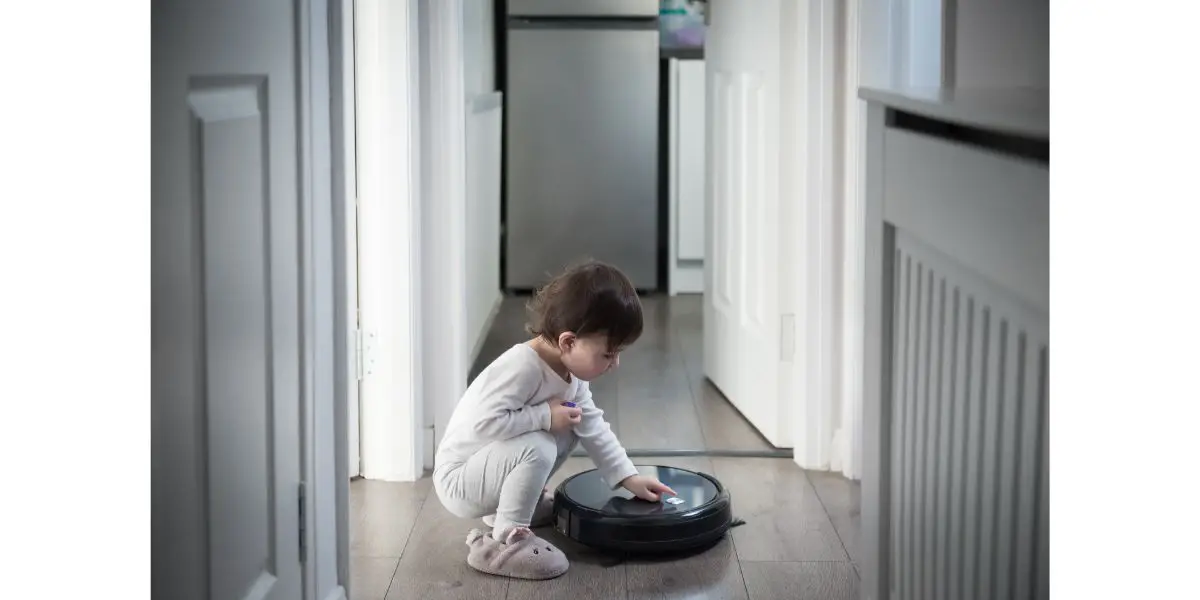Disclaimer: This post may contain affiliate links, meaning we get a small commission if you make a purchase through our links, at no cost to you. For more information, please visit our Disclaimer Page.
Since its release in 2002, the Roomba has been a helpful tool for pet owners and families who may not have time to regularly clean the house. However, as convenient as the Roomba is, it can be prone to issues that users may not necessarily be able to troubleshoot quickly, making it more of a hassle than helpful.
A common issue with Roombas is they start running on their own with no apparent cause or way to fix it. It can be annoying when the machine begins cleaning in the middle of the night or if it runs through the middle of the kitchen unexpectedly while you are trying to cook.
Below are the top 9 reasons why this issue occurs and potential ways to remedy the issue.
Table of Contents
9 Reasons Roomba Randomly Starts On Its Own
1. The Roomba’s Battery Was Running Low
If a Roomba’s battery runs low while it is in the process of cleaning, it will return to its dock to charge itself. What many users do not know is that once the Roomba is sufficiently charged it will start cleaning again to finish what it was doing earlier.
This feature is completely normal for a Roomba but it can make it appear as if the Roomba is just starting to clean on its own. In reality, the machine is just finishing its job from earlier and in fact has nothing wrong with it.
It can be annoying or surprising when this happens but there is nothing to really be done about it other than wait for the machine to finish its cleaning.
2. Your Roomba Has a Scheduled Cleaning Cycle
Roombas can be given a cleaning schedule via the corresponding app. When a schedule is given, the Roomba will start cleaning on its own according to the scheduled times without anyone interacting with it.
The schedule can even enable the Roomba to start cleaning when no one is at home.
If your Roomba has a schedule attached to it that you forgot about or someone else in the house set, it may appear as if the Roomba is starting up on its own and for no reason.
However, it is perfectly normal for the Roomba to clean by itself if it has a cleaning schedule.
3. The Roomba’s Clock Is Set Incorrectly
If your Roomba is set on a schedule but its internal clock is not set properly, it will start running by itself at unexpected times. It is simply following the schedule and clock it is set at and there is nothing inherently wrong with the machine when this happens.
Roomba’s not only have a clock that can be set but they also need a time zone to be input into its system.
Even if your clock is set correctly, unless it also has the correct time zone set it may cause the machine to run by itself at incorrect times. You can check your Roomba’s time zone by going into the settings on the app.
4. An Alexa Device Is Nearby
Roombas can be connected to an Alexa device in a household. If you put a Roomba into a room group on an Alexa, then every time the Alexa activates the Roomba will also activate.
This counts for any form of activation, such as asking the Alexa device to turn on the lights in a room.
Although this function is normal for both the Alexa device and the Roomba, since most users of both machines do not know about this, it will appear as if the Roomba is deciding to turn on by itself.
In reality, it is just paired with the Alexa which in turn causes the Roomba to run every time the Alexa runs.
5. Pets Or Kids Accidentally Activated The Roomba
Roombas are commonly used in households with children or pets. However, this means that said children or pets can accidentally turn on the Roomba just by accidentally pressing the clean button by bumping into it or stepping on it.
Keeping your Roomba’s dock in an area with heavy foot traffic can increase the chances of this happening.
Thankfully this means there is nothing actually wrong with the Roomba. Accidentally turning the Roomba on happens all the time. You can always move the device to an area that makes it less likely for pets to bump into it and that keeps it out of kids’ reach.
6. Issues With Charging Or Docking Sensors
Roombas use a docking station as a place for it to return to after a cleaning session. This allows the Roomba to be in a specific room or area and gives it a place to charge itself between each cleaning.
The Roomba charges itself via charging contacts and docking sensors on its station.
If the charging contacts or docking sensors have poor connection, then it can cause the Roomba to randomly start itself when docked at its base station. This issue can be caused by things like dust or dirt on the charging contacts or docking sensors getting in the way.
7. Dust Accumulation
Just like regular vacuums need to be emptied out, your Roomba also needs to be cleaned out. The Roomba is a fairly small device compared to a typical vacuum so it might actually need to be cleaned out more often, ideally after each cleaning session.
Emptying the Roomba’s dustbin after each cleaning helps prevent the Roomba from getting overfilled and helps the machine function better for longer.
Dust can also accumulate on or even in the crevices of buttons which can cause the device to turn on.
8. The Roomba Needs A Software Update
Like many other devices, Roombas need regular software updates in order to function as efficiently as possible. When your Roomba does not have the latest software update, it may cause issues with the machine’s functionality.
Alternatively, if a software update was issued properly, it is possible for the update to have bugs which will cause the machine to act up. Usually the developers will fix this issue and send out a new update to remedy it but in some cases bugs will cause a Roomba to activate for no reason.
9. The Roomba Is Stuck
Multiple things can cause a Roomba to get stuck. It could be due to a faulty part within the Roomba itself or a large amount of hair caught in the brushes or the wheels. If a Roomba becomes stuck, it will revert back into cleaning mode until whatever is causing the Roomba to get stuck is removed.
Even if your Roomba appears to function, large amounts of debris can get jammed in the machine and get it stuck in cleaning mode, giving off the appearance of the machine going around and cleaning on its own. In reality, it is in a form of standby while it waits for the issue to be fixed.
How To Fix The Issue
One of the best things to do when your Roomba is starting up on its own is to check its time settings. This can help eliminate several potential causes behind the random start ups. Make sure the time zone and the clock are set properly via the app.
Checking the Roomba’s time can also help with scheduling issues. A Roomba will run properly and follow the assigned schedule based on the time zone and clock that is set. Check the machine’s schedules and see if there are any that you forgot about or did not know about.
If time is not the issue, the next step is to check the Roomba’s placement. A Roomba that is placed in a room group on an Alexa device will turn on when the Alexa device activates, which can be remedied by simply removing the Roomba from any room groups. It is best to avoid pairing a Roomba with a room group.
Be sure that your Roomba and its dock station are not placed in an area in your home that has heavy foot traffic, especially if you have pets or children.
Simply placing the Roomba and its docking station in an area that is less likely for people to bump into it and accidentally push the on button will reduce the chances of the Roomba starting when you do not want it to.
Make sure that your Roomba is well maintained and kept up to date on the latest software. Dust the button and under the cover near the buttons to avoid those areas getting jammed with dirt. Wipe down the charging contacts and docking sensors to help the Roomba dock properly.
Always clean out your Roomba. Even though it is a vacuum and will always have some form of debris inside of it, it is a fairly small device and can easily get overfilled.
Things like hair can get tangled into its wheels or brushes and cause malfunctions, including random start ups. Regularly clearing out the Roomba’s wheels and dustbin will ensure its longevity and will help avoid issues like the device starting on its own.
If all else fails, you can perform a factory or hard reset on the device. This is best done when all other options have been exhausted.
To reset your Roomba, push the “clean” button, press and hold the “spot” and “dock” buttons for 10 seconds, then release the buttons after the green light around the “clean” button has turned off.
When all options including the reset have been tried and failed, it is time to contact tech support. It is possible that the issue is being caused by an internal issue like a corrupted memory which can make the Roomba think it has a cleaning schedule when it does not.
You can try to fix this by removing the battery for a few minutes to clear the memory but if that does not work, reach out to support for solutions.
Conclusion
Most of the time a Roomba will start on its own due to either a schedule issue, a battery issue, or a dust issue. Always check to see if there are schedules set on your Roomba and make sure the machine is set to the proper time zone.
Keep your Roomba maintained by updating the software, cleaning out the dustbin, and cleaning the buttons and dock to maximize its efficiency.


